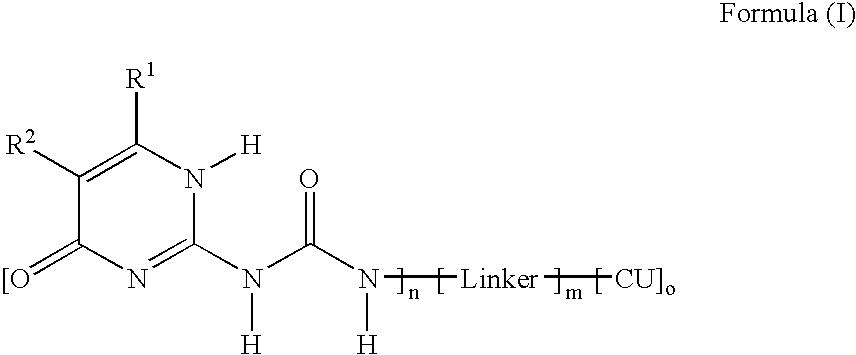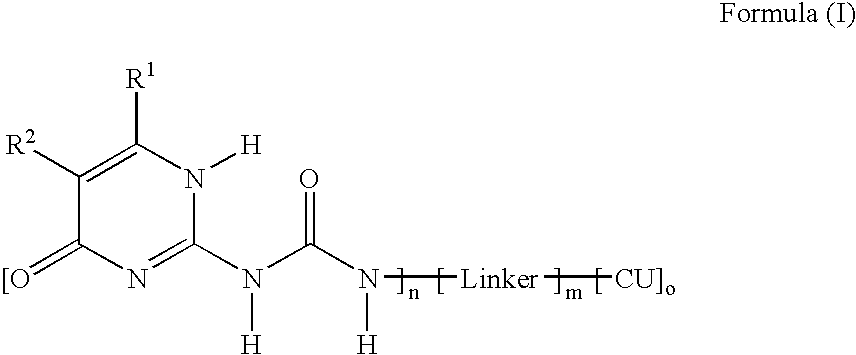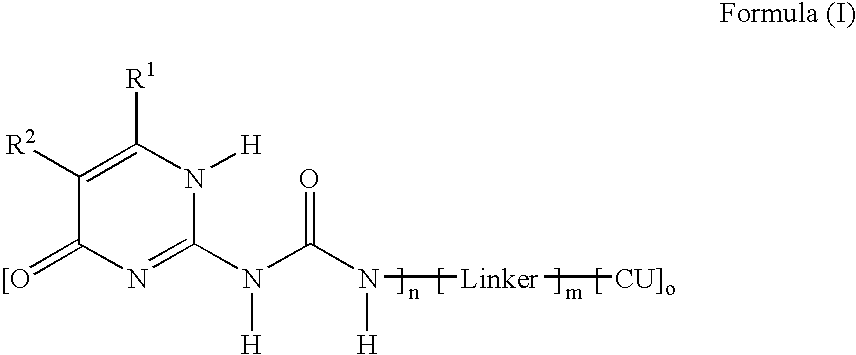Self-assembling dyes
a dye and self-assembling technology, applied in the field of dyes, can solve problems such as difficulty in satisfying, and achieve the effect of improving light-fastness
- Summary
- Abstract
- Description
- Claims
- Application Information
AI Technical Summary
Benefits of technology
Problems solved by technology
Method used
Image
Examples
examples
The Synthesis Examples 1 to 24 deal with the synthesis of the dyes used in accordance with the present invention, or of intermediates thereof. The evaluation of the dyes according to the present invention is described in the section ‘Ink-jet Examples’.
Materials
All materials used in the examples were readily available from standard commercial sources such as ALDRICH CHEMICAL Co.(Belgium) unless otherwise specified.
Reference dyes are commercially available from commercial sources such as ALDRICH CHEMICAL Co.(Belgium), CLARIANT or MERCK are prepared according to published methods, unless described in the Examples.
Measurement Methods
UV data have been recorded in 1 cm sample holders with observed optical densities between 0.1 and 2.0. ε is given as 1.mol−1.cm−1. Different Perkin Elmer UV-spectroscopes have been used. FT-IR spectra have been recorded on a Spectrum One Perkin Elmer ATR FT-IR spectroscope. NMR spectra have been recorded on a 300 MHz Varian spectroscope. MALDI-TOF...
synthesis examples
The Synthesis Examples 1 to 24 deal with the synthesis of the self-assembling dyes used in accordance with the present invention, or of intermediates thereof.
synthesis example 1
This example discloses the synthesis of the Isocyanate-1.
3 mL of pyridine were added to a white suspension of the isocytosine (2 gram) and a mixture of 2,2,4-trimethyl-1,6-diisocyanate and 2,4,4-trimethyl-1,6-diisocyanate (24 gram). The mixture was heated for 21 hours at an oil bath temperature of 100° C. under a slight argon flow. The reaction mixture was cooled to room temperature and pentane was added to induce precipitation of a white product. The suspension was filtered and the residue was washed several times with pentane to yield the isocyanate-1 as a white solid. Yield: 60%. 1H NMR (300 MHz, CDCl3): δ=0.95-1.05 (m, 9H), 1.1 (m, 1H), 1.3 (m, 1H), 1.6 (m, 2H), 1.8 (m, 1H), 2.2 (s, 3H), 3,0-3.4 (m, 4H), 5.8 (s, 1H), 10.1 (s, 1H), 11.7 (s, 1H), 13.1 (s, 1H). IR : υ (cm−1)=709, 744, 761, 798, 844, 946, 971, 1028, 1132, 1171, 1248, 1319, 1368, 1381, 1390, 1415, 1439, 1469, 1518, 1580, 1647, 1693, 2260, 2873 2933, 2956, 3143, 3196.
PUM
| Property | Measurement | Unit |
|---|---|---|
| Nanoscale particle size | aaaaa | aaaaa |
| Nanoscale particle size | aaaaa | aaaaa |
| Nanoscale particle size | aaaaa | aaaaa |
Abstract
Description
Claims
Application Information
 Login to View More
Login to View More - R&D
- Intellectual Property
- Life Sciences
- Materials
- Tech Scout
- Unparalleled Data Quality
- Higher Quality Content
- 60% Fewer Hallucinations
Browse by: Latest US Patents, China's latest patents, Technical Efficacy Thesaurus, Application Domain, Technology Topic, Popular Technical Reports.
© 2025 PatSnap. All rights reserved.Legal|Privacy policy|Modern Slavery Act Transparency Statement|Sitemap|About US| Contact US: help@patsnap.com



